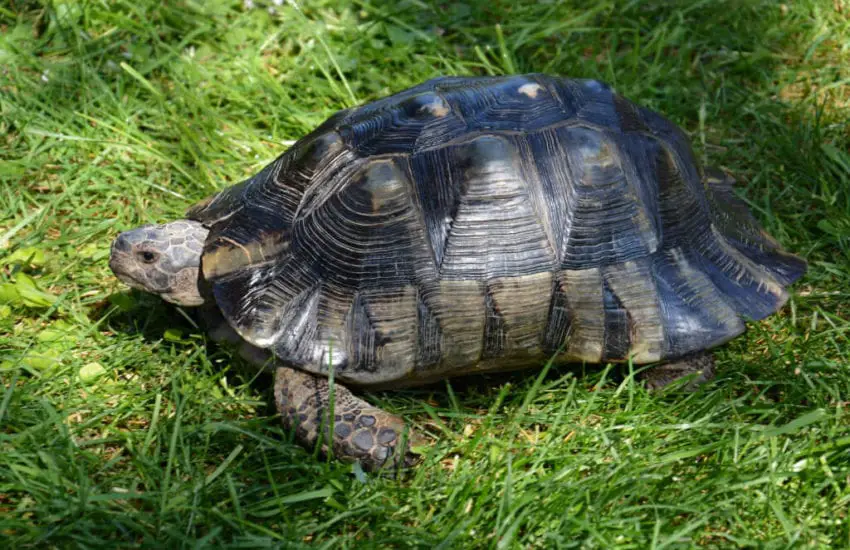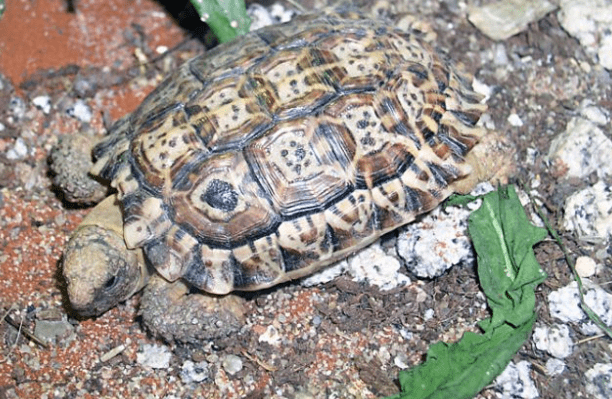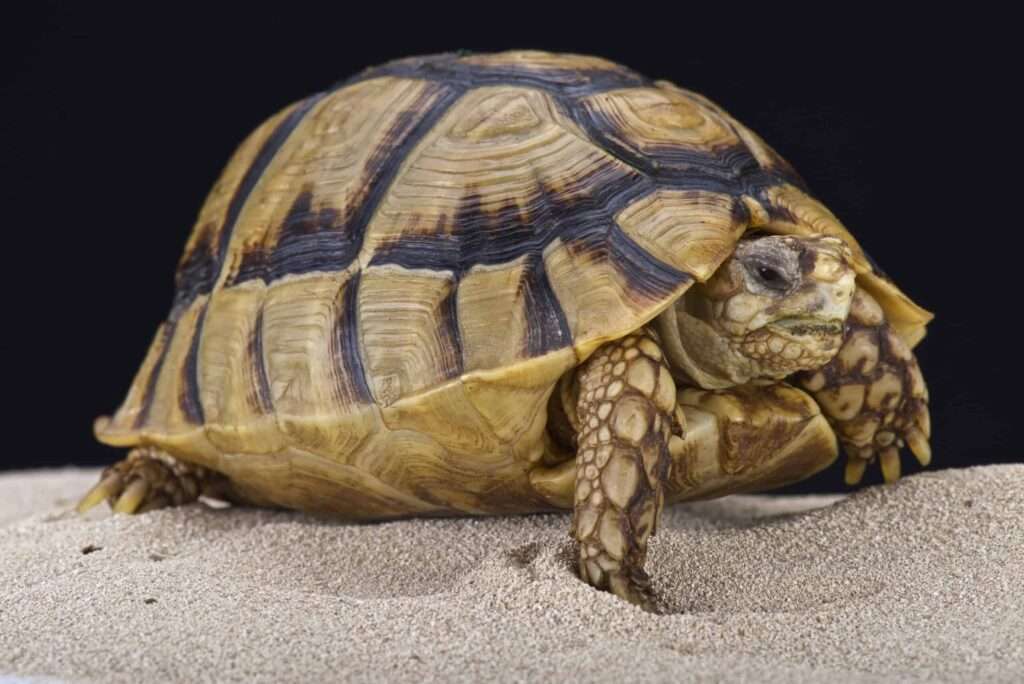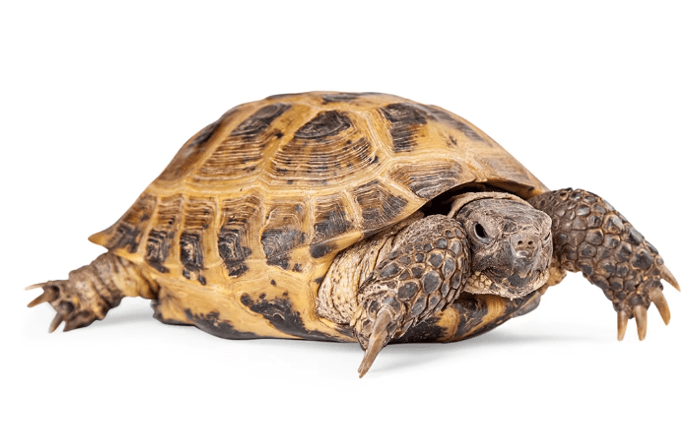
Description
The largest European tortoise is the Marginated tortoise. Its rectangular shell is noticeably thicker in the centre of the body. The shell’s back features a saw-like pattern with bell-shaped flanges. An adult specimen’s carapace is almost entirely black with yellow accents. The points of pairs of triangular markings on the lighter-colored ventral shell point in the direction of the animal’s rear. Large scales cover the front sides of the limbs. A lengthwise marking and an undivided carapace above the tail make the tail distinctive. The male’s tail is thicker at the base and longer than the female’s.
Habitat
Southern Greece, from the Peloponnesus to Mount Olympus, remote areas of the Balkans and Italy, and northeastern Sardinia are all home to marginated tortoises. They occupy arid landscapes, gardens, prickly scrub, and hilly locations.
Behavior
Marginated tortoises typically live alone and spend the winter hibernating. Despite the fact that they can be a little possessive in the wild, they are generally quiet and calm. Marginated tortoises sunbathe in the sun in the early morning to elevate their body temperature before going in quest of food. In the scorching midday hours after eating, they return to their shelters before departing once more in the late afternoon. These tortoises’ black carapaces are beneficial for survival in their natural habitat because they can absorb a lot of heat quickly and keep their body temperature stable.

Keeping as Pet
Enclosure Size
Large adult marginated turtles require a habitat that is at least 100 square feet in size. The enclosure must also be larger if tortoises are kept in a group. 12 adult tortoises may fit in enclosures of a 15 by 25 foot size.
Every extra turtle requires a 10%–20% increase in enclosure size. Smaller tortoises can fit in tighter spaces, but they require more care and attention.
A baby or young marginated tortoise can live in a 50-gallon turtle aquarium or a 10-inch-by-20-inch storage container. To keep the tortoises from escaping, raise the walls 12 to 18 inches above the surrounding terrain.
Temperature and Humidity
For marginated tortoises, a temperature range of 80 to 85°F is recommended. To maintain the right temperature gradient in the enclosure, a basking place between 95 and 100 degrees Fahrenheit is also required. Being cold-blooded, marginated tortoises rely on their surroundings to control their body temperature.
To generate the basking area, use a heat lamp, heat pad, or ceramic heater. So that the tortoises can relocate to a cooler spot if they become too warm, position the heat source on one side of the cage. To keep track of the enclosure’s temperature, use a digital thermometer with a remote sensor.
The enclosure’s relative humidity should remain between 60% and 70%. Respiratory issues might arise at low humidity levels, and shell rot can develop at high humidity levels. Utilize a hygrometer to measure the enclosure’s humidity levels and take action to raise or lower them.
Food and Water
Herbivores are the marginated tortoises. The dietary requirements of the marginated tortoise are satisfied by a varied diet of vegetables, leafy greens, and fruits. The diet should start with a salad mix and then include other foods like endive, dandelion greens, escarole, and turnip greens.
At least five times a week, feed marginated turtles. Every day, the water should be changed and the tortoises should always have access to a small dish of water. Eggplant, avocado, chilli pepper, wild mushrooms and unripe tomatoes should not be fed because they can upset the stomach.
Table





